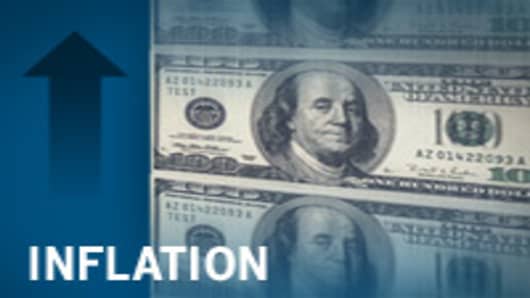European and U.S. inflation will rise in the medium- to long-term, according to Berdibek Ahmedov, manager for European and UK real return products at Pacific Investment Management Company (Pimco).
“The goldilocks days of having high growth coupled with low inflation are gone. We are entering a prolonged period of low growth, plus a tendency to high inflation,” Ahmedov told CNBC.
The product manager said that over the next three to five years, average inflationrates in Western economies will rise to 3-to-3.5 percent, having remained at 2-to-2.5 percent since the 1990s.
In addition, inflation rates will be more volatile, varying by plus or minus 2 percent or 3 percent, rather than a norm of roughly 1 percent since the 1990s.
Ahmedov said a combination of imported inflation from developing countries, plus the effect of monetary stimulus , will cause inflation to rise.
“In the 80s and 90s, ever cheaper labor was available because of China, India and Brazilcoming to the market,” he said. “Now that is coming to an end. Per capita incomes are rising in developing countries, with consumers being released, and high consumption of commodities.”
In addition, emerging nations may choose to battle inflationary pressures by devaluing their currencies, exporting inflation to developed countries which buy their goods and services.
As a result of globalization, national inflation rates have become increasingly sensitive to external factors, particularly in small, open economies such as the UK.
“For the last 5 years in the UK, 50 percent of inflation has come from outside the country, from, for example, food and commodities. In the 1990s, the external component of inflation was generally 10-to-15 percent, mostly from housing and real wages,” Ahmedov said.
According to statistics by Pimcoand the UK’s Office for National Statistics, food, which is highly sensitive to external price factors, contributed 18 percent to the cumulative change in the retail price index (RPI) between 2005 and 2010, as opposed to only 7 percent between 1991 and 2005.
In contrast, housing, which is comparatively insensitive to external price factors, contributed 12 percent to the RPI between 2005 and 2010, down from 36 percent between 1991 and 2005.
Regarding the effect of monetary stimulus on inflation, Ahmedov said: “Governments pushing real yieldslow, or into negative territory, plus a tendency to tolerate high inflation because of debt overhangs, risk tipping the balance towards ‘bad’ inflation [price increases that central banks are unable to control].”
Ahmedov added that over the next 6-to-12 months, deflationary pressuresare more of a risk than inflation.



